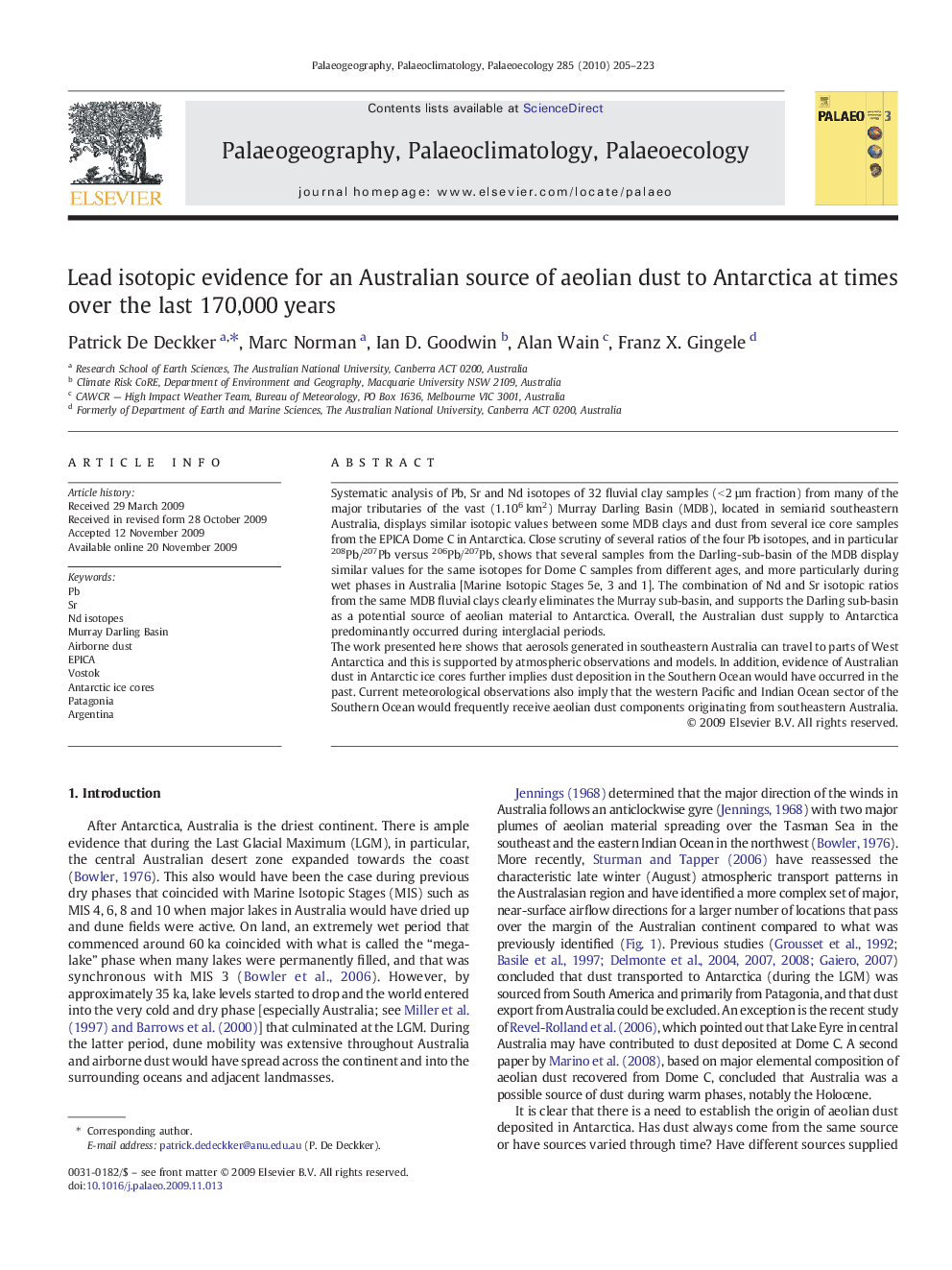| Article ID | Journal | Published Year | Pages | File Type |
|---|---|---|---|---|
| 4467850 | Palaeogeography, Palaeoclimatology, Palaeoecology | 2010 | 19 Pages |
Systematic analysis of Pb, Sr and Nd isotopes of 32 fluvial clay samples (< 2 µm fraction) from many of the major tributaries of the vast (1.106 km2) Murray Darling Basin (MDB), located in semiarid southeastern Australia, displays similar isotopic values between some MDB clays and dust from several ice core samples from the EPICA Dome C in Antarctica. Close scrutiny of several ratios of the four Pb isotopes, and in particular 208Pb/207Pb versus 206Pb/207Pb, shows that several samples from the Darling-sub-basin of the MDB display similar values for the same isotopes for Dome C samples from different ages, and more particularly during wet phases in Australia [Marine Isotopic Stages 5e, 3 and 1]. The combination of Nd and Sr isotopic ratios from the same MDB fluvial clays clearly eliminates the Murray sub-basin, and supports the Darling sub-basin as a potential source of aeolian material to Antarctica. Overall, the Australian dust supply to Antarctica predominantly occurred during interglacial periods.The work presented here shows that aerosols generated in southeastern Australia can travel to parts of West Antarctica and this is supported by atmospheric observations and models. In addition, evidence of Australian dust in Antarctic ice cores further implies dust deposition in the Southern Ocean would have occurred in the past. Current meteorological observations also imply that the western Pacific and Indian Ocean sector of the Southern Ocean would frequently receive aeolian dust components originating from southeastern Australia.
